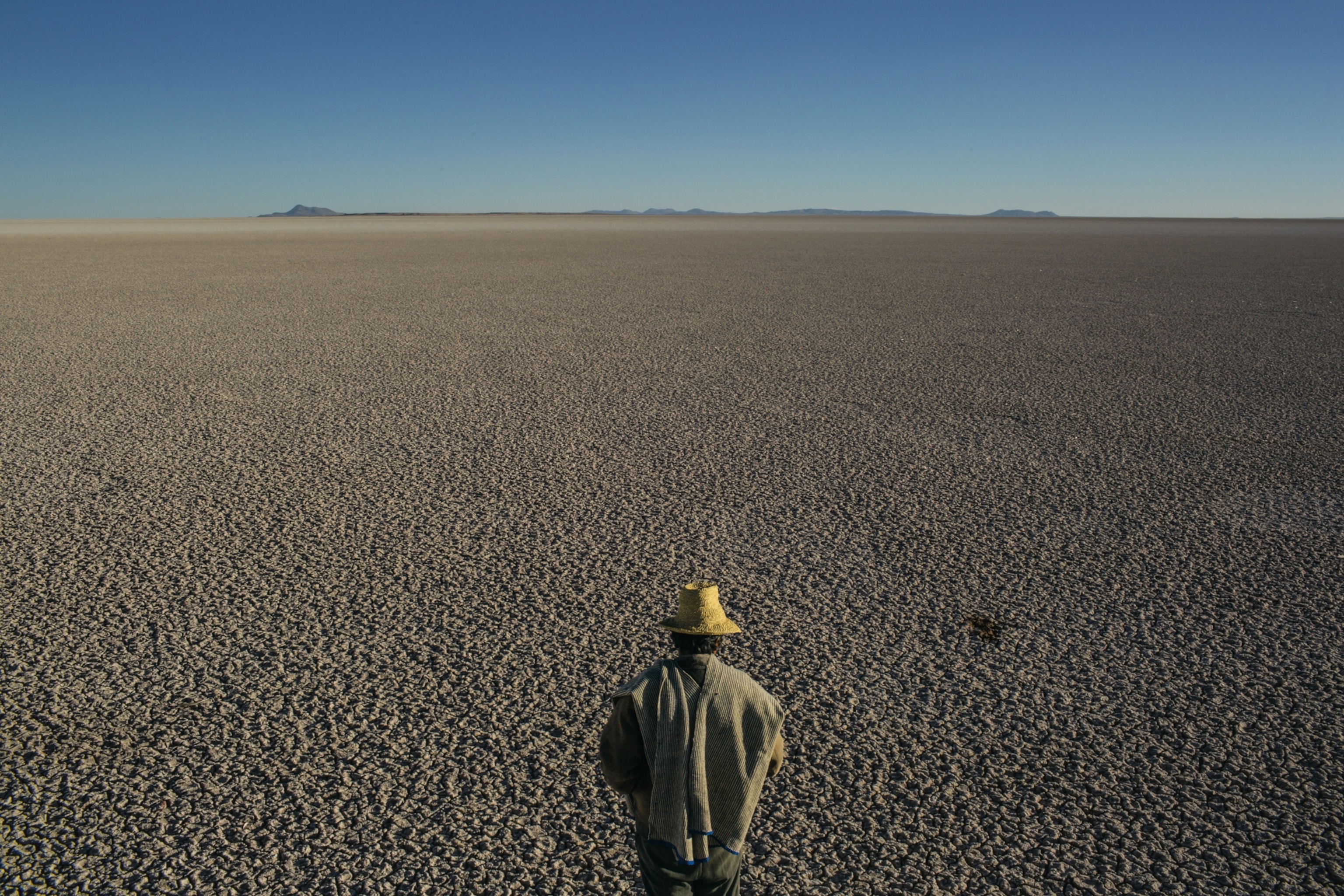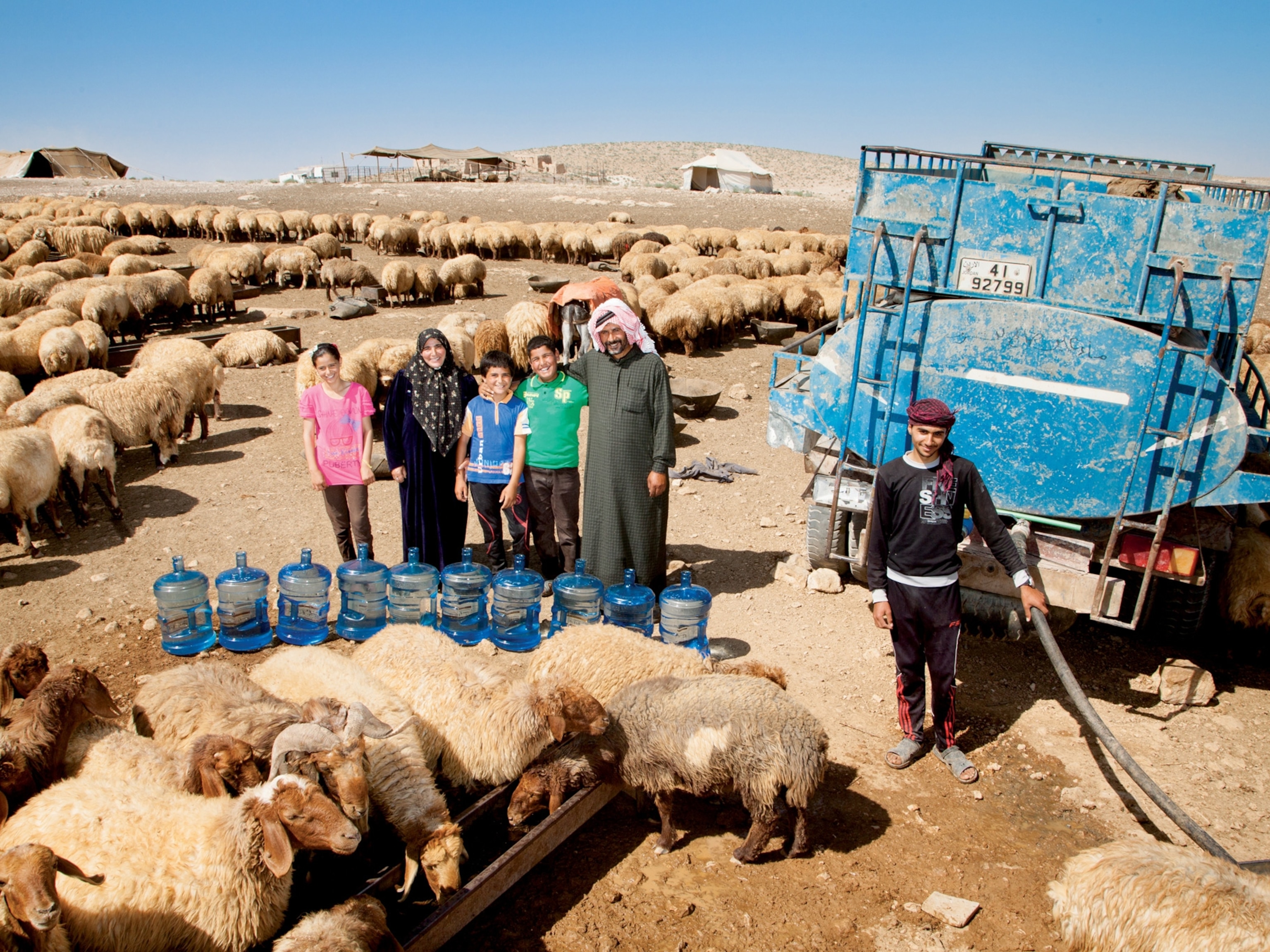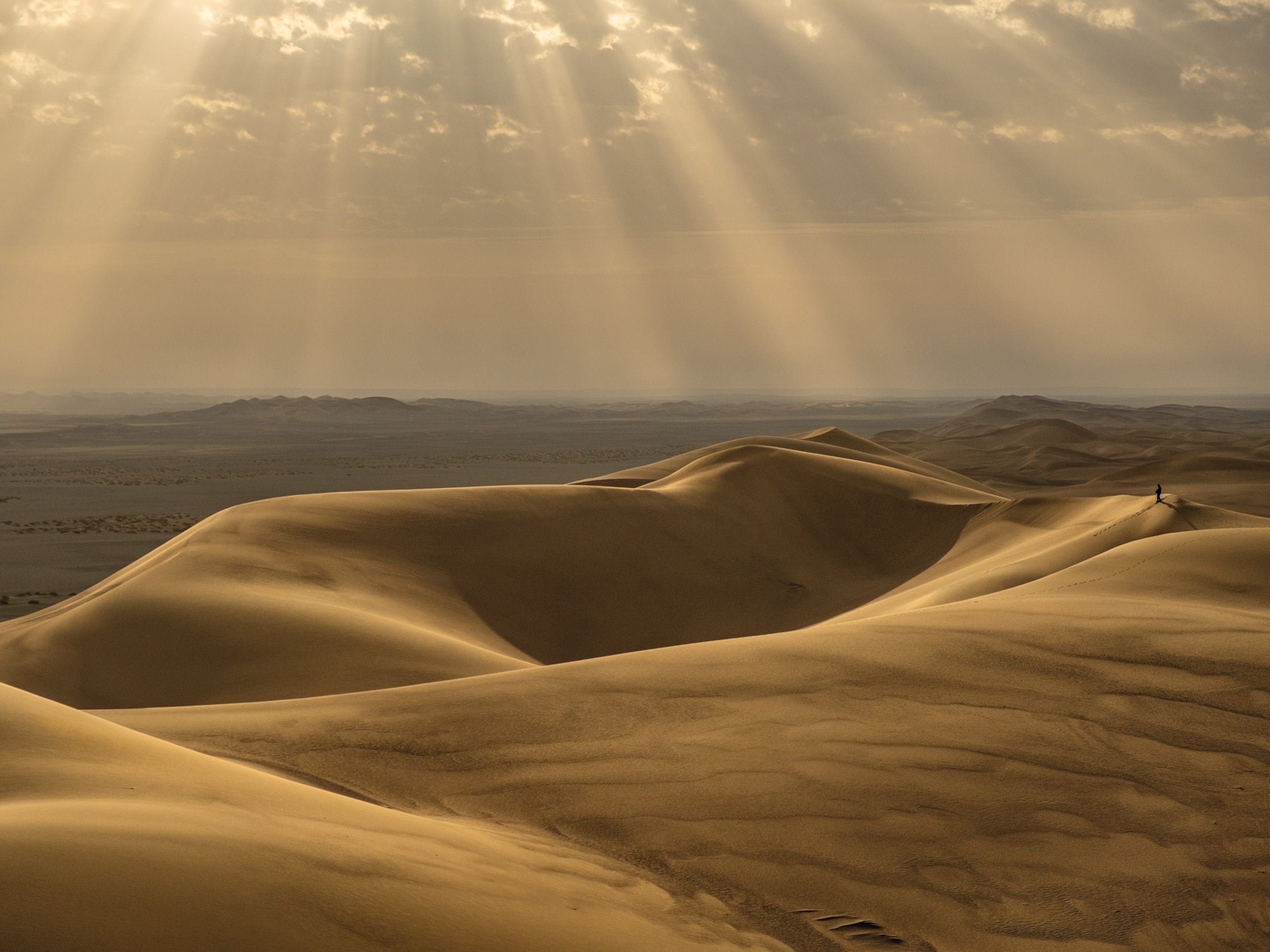
The Face of Water Shortages: A Lake That Serially Vanishes
This month’s FURTHER essay visits a Bolivian lake basin at the mercy of water diversion, weather extremes, and climate change.
In the high plains of Bolivia, a man surveys the baked remains of what was the country’s second largest lake. For centuries locals rafted on the waters and lived off the fish and waterfowl of Lake Poopó. Once covering some 1,100 square miles, the lake had shrunk and resurged in the past—but in late 2015 it virtually vanished. In a coming issue Kenneth R. Weiss will report on its demise.
Some three-fourths of jobs in the global workforce are dependent on water, according to a 2016 UN report on water and development. Agriculture, fishing, energy, transport—if their water sources dry up, livelihoods do too.
Many lakes face a common menace: climate change. When its effects alter habitats, disrupt food webs, and spawn extreme weather, that can lead to people being “uprooted from their homes,” Weiss says. War drives much of today’s forced migration, but climate change also is a factor, he says.
What doomed Lake Poopó? Water diversions upstream, weather extremes—and perhaps, one man told Weiss, too few sacrifices to the rain gods. But other locals—those who haven’t left—don’t dwell much on causes, Weiss says, “they’re just trying to figure out how the hell they’re going to feed their kids tonight.”





